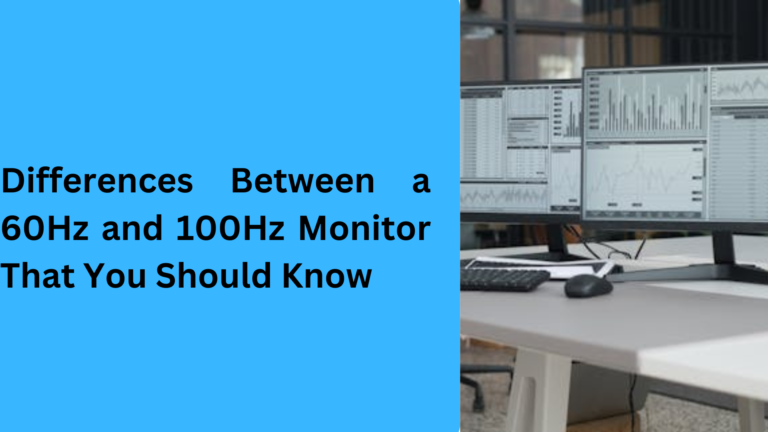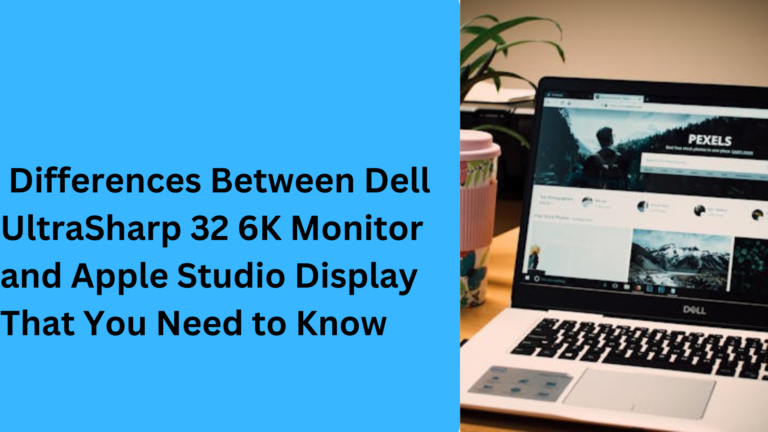10 Popular Differences Between Real User Monitoring vs. Synthetic Monitoring You Should Know
When managing a website or application, it’s crucial to monitor performance. Two of the most widely used methods are real user monitoring (RUM) and synthetic monitoring. While both are effective, they serve different purposes and offer unique insights. Knowing the differences between these two monitoring approaches will help you choose the right strategy for your business. Let’s dive into the 5 popular differences between real user monitoring and synthetic monitoring.
1. Real User Monitoring (RUM) Tracks Actual User Experience vs. Synthetic Monitoring Simulates User Interactions
When it comes to understanding the true performance of your website, real user monitoring tracks actual user experience by gathering data from real visitors. This means you get insights directly from real users interacting with your site, providing valuable metrics like page load time, clicks, and other user behaviors.
On the other hand, synthetic monitoring simulates user interactions. This is done by running automated tests from different locations, using scripts that mimic how a user would interact with your website. While synthetic monitoring doesn’t rely on actual users, it can help detect issues before they impact real visitors.
2. Real User Monitoring is Passive vs. Synthetic Monitoring is Active
Another key difference between real user monitoring vs. synthetic monitoring is how the data is collected. RUM is passive, which means it continuously collects data in the background as users naturally interact with your site. This allows you to get a clear view of real-time performance from real users at any time.
In contrast, synthetic monitoring is active. With synthetic monitoring, you manually set up test cases that run at specific intervals to check the availability and performance of your website. This method is proactive, allowing you to identify potential issues ahead of time.
3. Real User Monitoring Offers Insight Into Real-World Scenarios vs. Synthetic Monitoring Provides Consistent, Controlled Results
Real user monitoring offers insight into real-world scenarios, showing how different users with various devices, browsers, and internet speeds interact with your website. It gives you an accurate picture of how your site performs in the hands of real people under different conditions.
However, synthetic monitoring provides consistent, controlled results. Because synthetic monitoring uses predefined test cases, you can control the conditions under which your site is tested. This allows for a standardized approach to measuring performance, which is useful for comparing results over time.
4. Real User Monitoring is Ideal for Identifying Performance Issues Experienced by Users vs. Synthetic Monitoring Helps Test for Downtime and Availability
Real user monitoring is ideal for identifying performance issues that real users experience. It helps you pinpoint problems like slow page load times, broken elements, and other user-specific issues that could be hurting the overall user experience.
Meanwhile, synthetic monitoring helps test for downtime and availability. Because synthetic monitoring can simulate traffic to your website, it’s perfect for checking whether your site is available and performing well at any given time, even when no real users are active.
5. Real User Monitoring Reflects Actual User Paths and Behavior vs. Synthetic Monitoring Follows Predefined Paths
The real user monitoring approach reflects actual user paths and behavior, giving you data on how users naturally navigate through your website. This can reveal unexpected user flows or pages that users are frequently visiting.
On the other hand, synthetic monitoring follows predefined paths. You set up specific user journeys in your test cases to check the performance of key pages or features. While this is helpful for testing certain parts of your site, it doesn’t account for unexpected user behavior.
6. Real User Monitoring is Best for Measuring Actual Performance Metrics vs. Synthetic Monitoring Focuses on Predictive Metrics
Real user monitoring excels at measuring actual performance metrics like load time, time-to-interactive, and bounce rates as experienced by real users. These metrics are critical for identifying and solving real-world issues that affect your audience.
In contrast, synthetic monitoring focuses on predictive metrics, such as load times under ideal conditions or performance during simulated traffic spikes. These metrics are useful for planning and anticipating future performance needs, even if they don’t reflect real-world conditions exactly.
7. Real User Monitoring Relies on User Traffic vs. Synthetic Monitoring Works Without User Interaction
RUM relies on user traffic, meaning it only collects data when actual users visit your site. While this provides authentic insights, it might leave gaps in data for pages or times when user traffic is low.
Synthetic monitoring, on the other hand, works without user interaction, making it invaluable for monitoring less-visited pages, off-peak times, or pre-launch testing of new websites. It ensures you’re always collecting performance data, even when users aren’t active.
8. Real User Monitoring Detects Region-Specific Issues vs. Synthetic Monitoring Offers Global Testing Capabilities
Real user monitoring detects region-specific issues by capturing data from users across various geographic locations. This can help you uncover problems like slow performance or connectivity issues in specific areas, ensuring a localized performance improvement strategy.
Meanwhile, synthetic monitoring offers global testing capabilities, enabling you to simulate user interactions from various regions around the world. You can test how your site performs in different countries and optimize it for international audiences, even before users visit from those areas.
9. Real User Monitoring Helps Understand User Behavior Trends vs. Synthetic Monitoring Tests Specific Scenarios
RUM helps you understand user behavior trends, such as which pages users visit most often, where they drop off, and how they interact with elements like forms or buttons. These insights are invaluable for improving usability and conversion rates.
In comparison, synthetic monitoring tests specific scenarios that you define, such as completing a checkout process or filling out a contact form. While it doesn’t provide broad behavioral insights, it ensures critical functions on your site are working as expected.
10. Real User Monitoring Reflects Actual Environment Conditions vs. Synthetic Monitoring Ignores Real-World Variables
Real user monitoring reflects actual environment conditions, such as the impact of slow internet connections, outdated devices, or browser compatibility issues. This makes it ideal for diagnosing real-world performance bottlenecks.
In contrast, synthetic monitoring ignores real-world variables by testing under controlled conditions. While this ensures consistency in results, it doesn’t account for the unpredictability of actual user environments, which can lead to surprises when real users experience issues not identified during testing.
Bringing It All Together: RUM and Synthetic Monitoring Are Stronger Together
When comparing real user monitoring vs. synthetic monitoring, it’s not about choosing one over the other—it’s about leveraging the strengths of both. Use real user monitoring to capture real-world performance metrics and behavior trends, while synthetic monitoring ensures your website’s uptime and functionality remain top-notch. Together, they create a holistic approach to performance monitoring that enhances the user experience and ensures your site performs optimally under all conditions.
By targeting related phrases such as “region-specific performance issues,” “global website monitoring,” and “proactive performance testing,” this content provides clarity for users researching the differences between these monitoring techniques and helps them make informed decisions.
FAQs About Real User Monitoring vs. Synthetic Monitoring
1. What is the difference between real user monitoring and synthetic monitoring in website performance tracking?
Real user monitoring (RUM) tracks the actual performance of your website as experienced by real users. It collects data such as page load times, user behavior, and device/browser performance. Synthetic monitoring, on the other hand, uses scripted tests to simulate user interactions and evaluate site performance under controlled conditions. RUM shows real-world insights, while synthetic monitoring helps proactively test for potential issues.
2. Which is better for detecting real-world performance issues: real user monitoring or synthetic monitoring?
Real user monitoring is better for detecting real-world performance issues because it captures data directly from real users interacting with your site. It reflects variables like slow internet connections, outdated devices, and regional performance challenges. Synthetic monitoring, however, is more suitable for proactively identifying potential problems before they affect users. Combining both methods ensures comprehensive monitoring.
3. Can synthetic monitoring be used for downtime detection during non-peak hours?
Yes, synthetic monitoring is ideal for detecting downtime during non-peak hours because it runs automated tests even when there’s no user traffic. By simulating user behavior 24/7, synthetic monitoring ensures your website’s availability and functionality are continuously monitored, helping you catch and fix issues before real users are impacted.
4. Why is real user monitoring important for understanding user behavior trends?
Real user monitoring is crucial for understanding user behavior trends because it provides insights into how actual visitors navigate your site. It tracks metrics like the most-visited pages, user drop-off points, and interaction patterns. These insights help optimize the user experience, improve conversion rates, and address performance issues that impact real visitors.
5. Is it necessary to use both real user monitoring and synthetic monitoring for website performance?
Yes, using both real user monitoring and synthetic monitoring is highly recommended. RUM helps you analyze real-world user experiences and troubleshoot performance issues that real visitors encounter. Synthetic monitoring, on the other hand, ensures your site’s uptime, tests critical user journeys, and provides proactive insights into potential problems. Together, they offer a complete view of your website’s performance.


